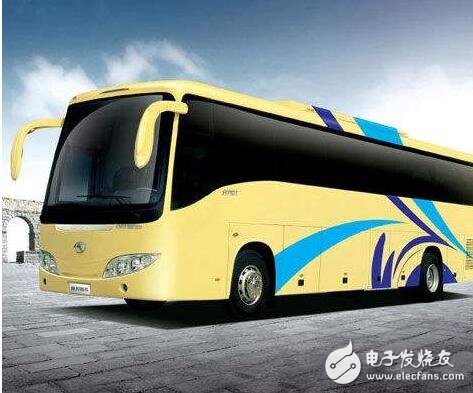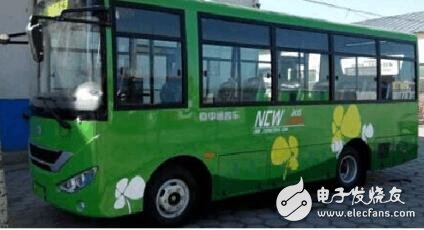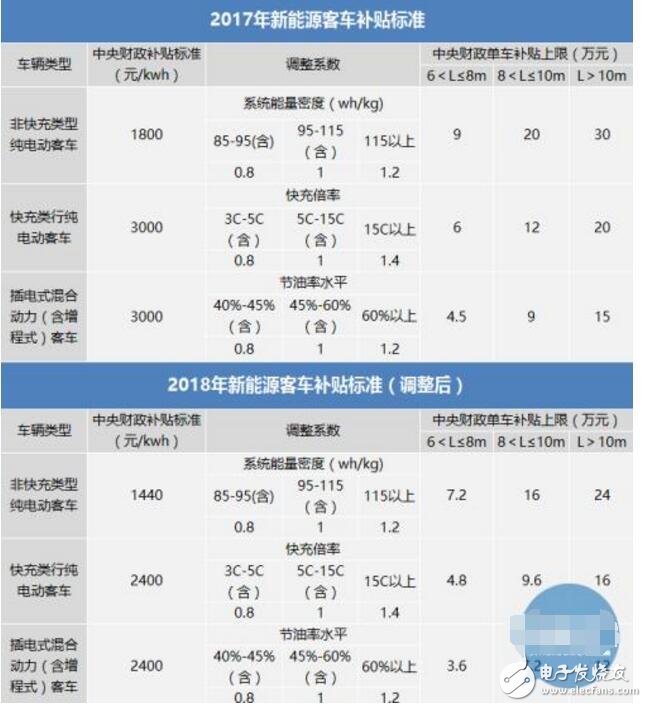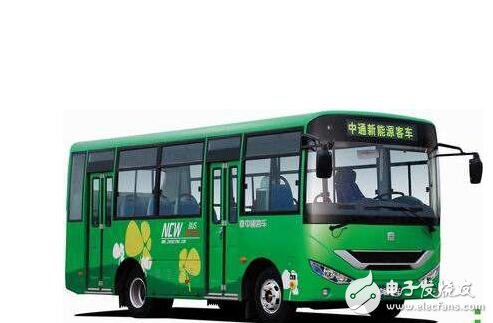After more than ten years of development, China's new energy vehicles have achieved remarkable results. The production and sales of new energy vehicles have ranked first in the world for two consecutive years. From 2011 to now, the cumulative sales of new energy vehicles in China has exceeded 1 million. At the same time, a number of outstanding independent new energy auto companies have grown up. Last year, there were 17 new energy auto companies with global sales exceeding 10,000, and China accounted for 9.
New energy bus meets a new round of challengesIn 2016, China sold a total of 129,000 new energy buses, accounting for 1/4 (25.3%) of new energy vehicle sales. In China's passenger car market, the share of new energy buses is also close to 1/4 (23.8%). It can be said that the passenger car has played a breakthrough role in the development of China's new energy automobile industry. Especially in the early stage of promotion, there are many difficulties from the preparation of the industry to the acceptance of consumers. The first to break through and come out is the new energy bus. Today, China's new energy bus promotion number ranks first in the world.
China has the largest passenger car market and bus industry in the world. The bus industry has long adhered to the development path of independent innovation, especially in the field of clean energy buses, and the overall technical level is in a leading position in the world. In the technical innovation of China's auto industry, the passenger car has brought a good head, and it is a natural gas bus, a LNG passenger car, a pure electric bus, a hybrid bus, and a plug-in hybrid bus. Today, the fuel economy of China's 12-meter hybrid bus has reached 20L/100km, leading the world.
The development of new energy buses has also driven the development of key components such as automotive batteries, motors, and electronic controls, laying the foundation for the overall development of the industry. Taking the data of the first half of 2016 as an example, the battery used by passenger cars accounts for about 50% of the total shipments of automobile power batteries. That is to say, the passenger cars that account for about 1/4 of the sales of new energy vehicles consume half of the total battery. . It can be said that the rapid development of China's power battery in recent years has benefited a lot from new energy buses.

Car companies need to cure subsidy policy "over-dependence"
In the first half of this year, although the overall trend of China's new energy vehicles was good, new energy buses have entered a trough, showing a negative growth year-on-year. The most direct reason for this is the adjustment of the subsidy policy for new energy buses, including the adjustment of subsidy amount and the requirement of 30,000 kilometers of mileage. This also shows that China's new energy bus companies are over-reliant on subsidy policies. The author also remembers that the development momentum of hybrid buses in China was very good in 2012, but the landslides were severe after the subsidies were cancelled. It can be seen that the new energy buses are highly dependent on the policy.
At present, China's new energy bus industry faces new challenges, such as the cost of complete vehicles and the high cost of parts and components. Many technical solutions are “following†subsidy policies, paying attention to technical solutions with more reasonable cost performance and insufficient development. In addition, there are problems with the quality and safety of some products. Among them, it is imperative to overcome the inadequacy of adjustments to subsidy policies. Automobile products (except for special use in the country) must participate in market competition with reasonable price/performance ratio. The state subsidies for new energy vehicles can only be short-term subsidies for initial R&D costs in the initial stage and higher production costs before the above-mentioned quantities. .
Recently, Vice Premier Ma Kai of the State Council once again stressed that it is unshakable to adhere to the national strategy of developing new energy vehicles. The reason why the country has raised the new energy automobile industry into a national strategy, the author believes that due to three major factors: environmental protection, energy security and industrial upgrading.
The first is environmental protection. Severe smog pressure has strengthened our country's determination to develop new energy vehicles. Relevant ministries and commissions have proposed the goal of clean bus; the "13th Five-Year Plan for the Development of Modern Comprehensive Transportation System" issued by the State Council requires that the construction of public transportation cities be comprehensively promoted at prefecture-level cities and above, and the proportion of new energy buses will not be Less than 35%. Forecasts show that in 2020, the total number of city buses will reach 700,000, and new energy buses will account for more than 50%.
Second is energy security. With the growth of China's automobile ownership, the demand for oil has also increased year by year. At present, China's dependence on foreign oil has reached 65%. It is expected to increase to 68% by 2020 and 74% by 2030, with serious energy potential. safe question.
The third is industrial upgrading. China is a big automobile country, but it is not a car power. Its R&D strength is weak. The self-owned brand passenger cars account for less than 50% of the domestic automobile market, and most of them are low-end products. The lack of core technology of key parts of traditional cars is a serious problem. At present, China's self-owned brand cars do not have the ability to participate in international market competition. In 2016, the total vehicle exports were only 810,000. China's auto industry must change its state of being big and weak.
In the development of new energy vehicles, the passenger car industry has great responsibility, and its impact on the urban atmospheric environment is more prominent. Therefore, the development of new energy buses is by no means a short-term behavior and must be determined.

At the end of 2016, the Ministry of Finance issued the Notice on Adjusting the Financial Subsidy Policy for the Promotion and Application of New Energy Vehicles. Cai Jian [2016] No. 958 Document pointed out: Under the premise of maintaining the overall stability of the subsidy policy in 2016-2020, adjust the subsidies for new energy vehicles. standard. For new energy buses, with the power battery as the subsidy core, based on the battery production cost and technological progress level, set the energy consumption level, vehicle driving range, battery/whole vehicle weight ratio, battery performance level and other subsidized access. Threshold, and comprehensive consideration of battery capacity, energy density level, charging rate, fuel economy and other factors to determine vehicle subsidy standards. Further improve the subsidy standards for new energy trucks and special vehicles, and verify according to the battery power sharing method that provides driving power. At the same time, the central and local subsidy caps are set separately, of which the local financial subsidies (the sum of local financial subsidies at all levels) shall not exceed 50% of the central government bicycle subsidies). In addition to fuel cell vehicles, the central and local subsidy standards and caps for various models from 2019 to 2020 are 20% off the current standard. At the same time, relevant ministries and commissions will continue to adjust and improve according to factors such as technological advancement of new energy vehicles, industrial development, and scale of application.
At present, in the case that the double point policy has been determined, it will fall 20% on the current subsidy standard starting from 2018. After the introduction of the double-points policy, the official expression means “to improve the energy-saving level of passenger cars and alleviate energy and environmental pressuresâ€. However, in fact, after the new energy scams, the government decided to continue to promote the development of new energy vehicles and achieve the "curve overtaking". With this policy, management measures have been tilted from the past government support to the market. Before the arrival of 2020, the points system + subsidy will be the two major directions in the future.

New energy buses are the most active areas of self-innovation in China's auto industry, and the types of technologies are diversified. This year's government work report proposes to encourage the use of clean energy vehicles, so we should promote the diversification of clean energy vehicle technology. For which technical solution is more suitable for future development, it needs to be re-evaluated and selected, and re-innovation.
1, fast charge and online charge is more suitable for pure electric bus
The author has calculated the length of some city bus lines, and found that most of the buses run within 20 kilometers, and even the mega-sized cities such as Beijing are within 40 kilometers, so the vehicle does not need to be loaded with batteries for 300 kilometers. Running, fast charging and online charging are more suitable for pure electric buses.
2. Fuel cell buses are suitable for long distance transportation
International fuel cell vehicle technology has matured, and China's technology research and development to industrialization is still far from the international advanced level. The author believes that the relationship between pure electric vehicles and fuel cells is complementary, and each has its own strengths and shortcomings. Based on current battery technology, pure electric vehicles are more suitable for short-distance use in cities. Let an electric car run a large number of batteries for four or five hundred kilometers, which can be done technically, but it is expensive and energy-consuming, and carbon emissions are not low. Even if China can achieve the goal of 300Wh/kg of battery cell energy density by 2020, it will be difficult to reach the driving range of fuel vehicles. The extent to which the battery will develop in the future is still unclear. At least at this stage, pure electric vehicles are more suitable for medium and short-term use. Fuel cell vehicles are more suitable for long-distance use. There may be overlap in some application areas, but overall there will be Division of labor.
China should actively promote the technical innovation and popularization and application of fuel cells. It is suggested that starting from long-distance trucks or starting from relatively fixed buses, after all, the construction of hydrogenation station infrastructure is difficult. Relatively speaking, fuel cells are less difficult to get started with commercial vehicles than passenger cars. Therefore, the author believes that the development of fuel cell vehicles in the passenger car field may be more suitable for China's national conditions.
In order to develop fuel cell buses, we must speed up our actions. We can learn from the experience of developing natural gas vehicles and electric vehicles in China, and introduce the industrialization stage from the technology research and development stage as soon as possible through scale demonstration. For example, you can choose a region rich in hydrogen resources, and engage in demonstrations in 100 districts (or 500 in ten districts) to form a certain scale to stimulate industrial development. In the next step, the country may make corresponding arrangements. It is believed that fuel cell buses will soon be welcoming opportunities, and it is recommended that qualified bus companies be placed in advance.

3. Don't relax the development of natural gas buses
Natural gas vehicles have the advantage of low life cycle emissions and are typical clean energy vehicles. After more than 20 years of promotion, China's natural gas vehicle ownership has reached 5 million, which is the largest country in the world. As of 2014, China's natural gas bus ownership was 180,000, accounting for 35% of the bus ownership in the year; 15 cities with more than 90% bus gasification rate, mainly distributed in western China; LNG (liquefied natural gas) There are 11 cities with thousands of buses. Therefore, the development of natural gas vehicles should be fully affirmed, especially in areas with abundant natural gas resources in the west. Of course, natural gas vehicles will also adopt technological advances to further reduce emissions and energy consumption. The best way is to develop hybrid natural gas vehicles, that is, gas-electric hybrid vehicles. (Wang Binggang, former director of China Automotive Technology Research Center of China Automotive News Network and national key project of new energy vehicles)
The growth of an emerging industry generally has to go through four stages: gestation period, introduction period, rapid development period and maturity period. China's new energy vehicles are still at this stage of the introduction period.
Singapore's application of the “carbon emission factor†estimation method simplifies complex problems and is worth learning from. The safety of electric vehicles will determine the success or failure of the entire new energy vehicle industry. If you don't pay attention, it will eventually become a disaster. South Korea's battery industry poses a huge challenge to China's new energy vehicle battery industry, and we must face this challenge. Promoting the time-sharing leasing model is a very important task that will drive a new revolution in future car consumption.
With 15+ years manufacturing experience for phone accessories.
Supply various portable charger for iPhone, Airpods, laptop, radio-controlled aircraft ,laptop, car, medical device, mobile device, ect.
Avoiding your devices run out of charge, portable chargers to keep your mobile device going.
From the original ordinary power bank charger to wireless power bank, green energy solar power bank, magnetic mobile power, Portable Power Stations and other products continue to innovate.
We help 200+ customers create a custom mobile power banks design for various industries.
Portable Charger,Power Bank Charger,Mini Power Bank,Wireless Power Bank, Solar Power Bank
TOPNOTCH INTERNATIONAL GROUP LIMITED , https://www.mic11.com
